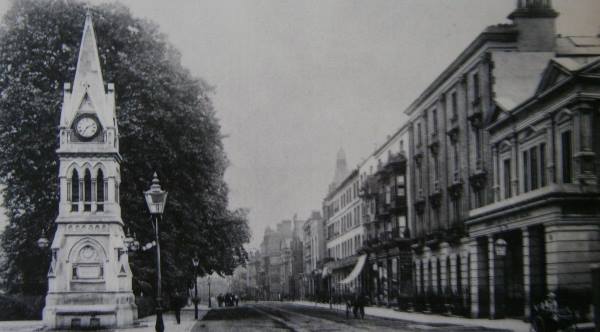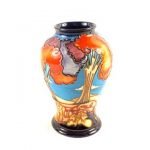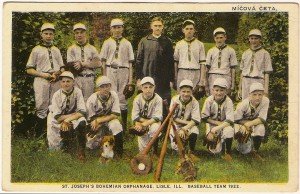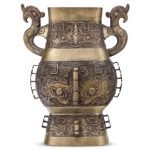While the golden decades of the American circus may have passed, the parade of circus collectibles continues. Leading auction galleries still regularly offer vintage posters of Ringling Brothers, Barnum and Bailey, and some of the others. Elsewhere related advertisements, handbills, programs, pinback buttons, and other items still attract collectors.
Among the earliest known circus collectibles is an 1810 handbill promoting the Salem Circus. Printed by B. True, they were distributed on the streets of Boston early that year.
The handbills proclaimed that the Salem Circus “will be open for a few nights with a grand display of horsemanship.” Among the featured performers was Malter Tatnal who was to “ride with his head to the ground and perform other difficult attitudes.”
While the remarkable P .T. Barnum opened the American Museum in New York during the 1840s with exhibits and trained animals, it was not technically considered a circus. Barnum’s circus adventures would come later, but the traveling circus did exist by the middle of the 19th century.
A striking poster in the Library of Congress promotes “five celebrated clowns attached to Sands, Nathan Company’s Circus, a traveling company.” The poster, some 11 feet in width and featuring, woodcut illustrations, was prepared in 1856.
Significant circus operations in the United States during the 1870s included the Adam Forepaugh Circus, Sells Brothers Circus, W.W. Cole’s New York and New Orleans Circus, and the W.C. Coup Circus.
In 1878 the W .W. Cole Circus headed west and used larger newspaper advertisements to attract what they termed Pacific Coast audiences. A San Francisco advertisement offered nine days of “the grandest and best circus ever in California,” featuring “the laugh-provoking Pico, the most comical of all clowns.”
In the early 1880s W.C. Coup Circus had struggled to become one of the most famous of the period. Once a manager and partner with P.T. Barnum, Coup had been among the first to utilize railroad flatcars to transport his circus nationwide. Coup could literally bring the circus to any town connected to a major railroad line.
According to legend, Coup and his crew were visiting various towns and pasting up Coup Circus posters one summer when they came upon a theater which had just completed a run of William Shakespeare’s works. An image of the great playwright and his accomplishments was located in a prominent place. Upon being informed that the spot was sort of a tribute, Coup quipped:
“Shakespeare? Never heard of him. Paint him out and paste the W.C. Coup Circus in.”
W.C. Coup was also enterprising enough to offer premiums to attract circus crowds. Among them were play money notes on the First National Amusement Bank, and Hippodrome Puzzle Cards which were similar to colorful trade cards.
Elsewhere on the circus landscape of the late 19th century, James Bailey combined the earlier Sells Brothers Circus and the Adam Forepaugh Circus under single management. Next Bailey teamed up with P .T. Barnum to create the historic Barnum & Bailey Circus which more than lived up to it’s billing of “the Greatest Show on Earth.”
In 1898 Bailey decided to take the sprawling Barnum and Bailey Circus on a lengthy tour of Europe. The tour left the country, especially the East Coast, wide open for competing circus shows including the rapidly-growing Ringling Brothers Circus.
Going into the 20th century, notes one historian, the two mighty circus operations battled head to head, “plastering their own color posters over each other’s and enticing the public to their respective shows with outlandish publicity gimmicks.”
Ringling Brothers managed to purchase Barnum and Bailey in 1907. The two circus giants operated separately until 1919 when they were merged to form legendary Ringling Bros. and Barnum & Bailey Circus.
It was a time when the thrill of the circus was appealing to children everywhere. In 1910 author Edgar Barlington launched a Circus Boys series of books. Titles often featured various geographical areas including Across the Continent, Dixie Land, and On the Plains.
There were circus toys too. Lithographed metal and painted wood circus wagons were being produced by the Converse Company in 1913, along with wooden animals. In later years the Hubley Manufacturing Company sold cast-iron circus wagon toys with accompanying horses and wild animals.
Circus shows big and small generally prospered in the early 20th century. Among them were Adams Circus, M.L. Clark and Sons, Campbell Brothers Circus, and Russell Brothers Circus. In addition many circus operations simply adopted the name of sponsoring organizations as they moved from place to place. They might become the American Legion Circus, or the United Charity Circus.
Featured acts and stars became increasingly important too. By the 1920s many of the circus posters turned attention to a specific performer. One of the most memorable was Lillian Leitzel billed as “the world’s most marvelous lady gymnast.” Leitzel “starred” on some of the finest posters of that decade. The four-foot-nine-inch trooper thrilled audiences until a fatal fall from a trapeze in 1931.
In 1936 when the last surviving Ringling brother died the mighty circus of the same name was staging operations in seven different locations.
During the 1940s the Ringling Bros. and Barnum & Bailey circus was easily number one in the nation. However many smaller operations were flourishing including the Clyde Beatty-Cole Brothers Circus, and A.G. Kelly & Miller Brothers.
Circus toys, like the events themselves, continued to be popular both before and after WWII. The Kenton Hardware Company made horse-drawn circus wagons.
In the early 1950s the company moved from cast-iron models to toys made of rubber.
Ringling Bros. and company decided in 1956 to retire the nostalgic but obsolete Big Top tent in favor of indoor arenas.
During the 1960s the Ringling Bros. circus empire was sold by the Ringling family to Irvin Feld. It later was briefly owned by Mattel, Inc. before being again acquired by Feld and his son Kenneth Feld.
In 1969 author Louis Hertz proclaimed that owning an “old circus wagon undoubtedly ranks as the epitome of circus collecting, and there may still be a few old wagons hidden around the country awaiting a zealous hobbyist.”
Classic circus posters would probably have been a better bet. The most lavish examples were those created for Barnum and Bailey in the 1890s. Most were made by Strobridge Lithography of Cincinnati, Ohio.
Frequently the circus posters were used for many seasons before any significant changes in design were made. Larger examples, usually a standard 28 by 42 inches, were the most likely to be destroyed once the circus moved on. Smaller sizes were sometimes saved and are seen in major auctions today.
Other circus collectibles include songbooks once sold to crowds by clowns (sometimes called songsters), routing books and records, coloring books, circus company letterhead, services, photographs, and special circus newspapers (sometimes called heralds), and books from circus greats like P .T. Barnum himself.
Certainly the parade of circus collectibles goes on and on.






